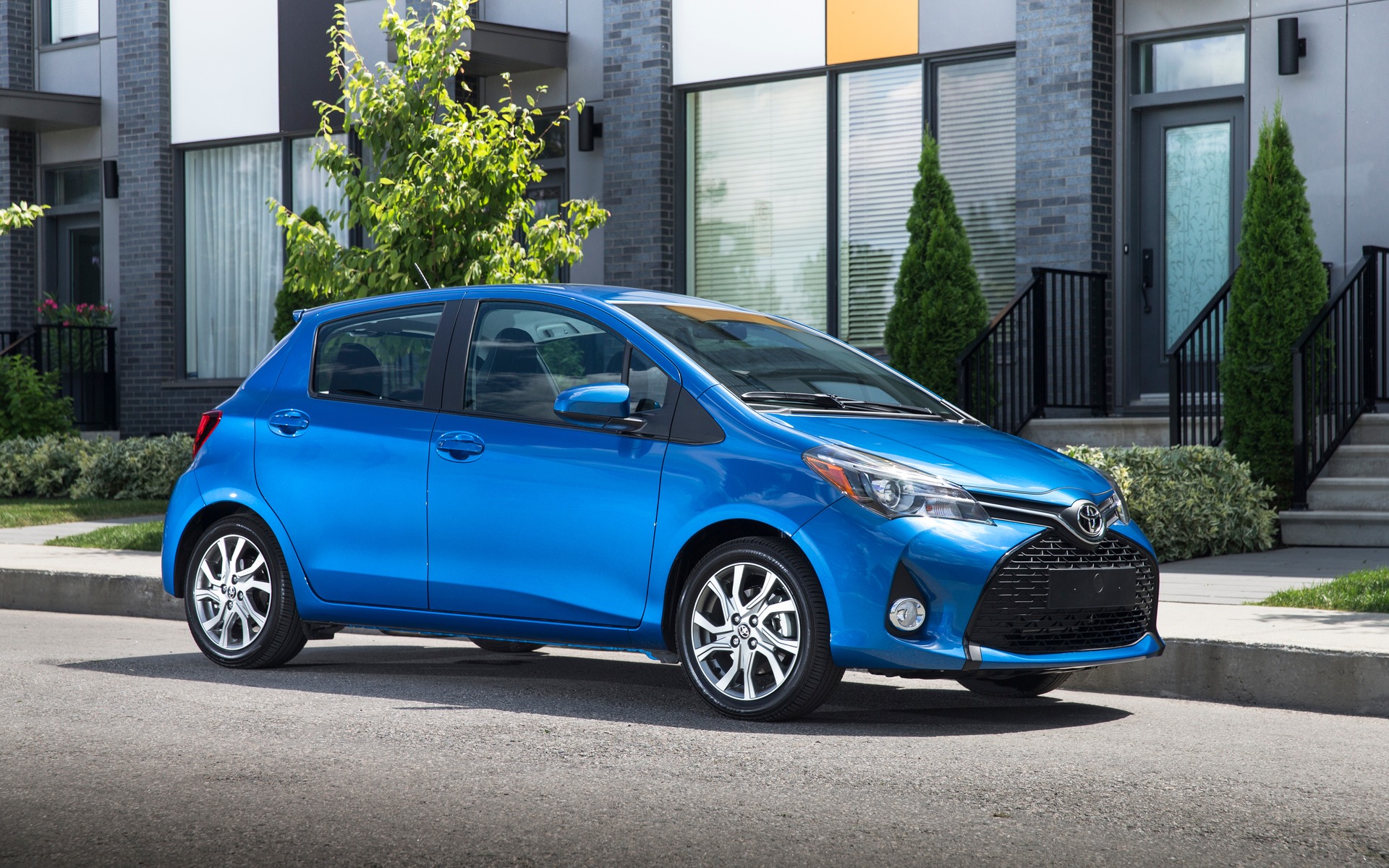2015 Toyota Yaris: It Ain’t Easy Being a Sub-Compact

| Strong points |
|
|---|---|
| Weak points |
|
Life as a sub-compact isn’t always a bowl of cherries. Their primary use, small size and mandatory low price amount to a big challenge for manufacturers, as it’s hard to hit all these targets and still come up with something that’s inspiring and fun to drive. But then again, buyers choose sub-compacts for rational reasons, not emotional ones. The only sub-compact that can claim to be captivating is the Ford Fiesta ST.
Toyota’s entry in the sub-compact competition is the Yaris. It’s not only been updated for 2015, it’s also boasting a new nationality. Whereas it was once designed, engineered and built in Japan, the Yaris is now a product of France. Why did Toyota decide to put the fate of its compacts and sub-compacts into the hands of its European division? The answer is simple: Europeans love small cars and Toyota wants to be sure that its models are perfectly aligned with the needs of buyers. Toyota’s plan is to create specialty centres in different geographic regions around the world. This strategy has already been applied to the Camry and Tundra, two models that are now entirely developed in North America.
Most changes are skin deep
Even though the Yaris has changed its country of origin, it has kept most of the old model’s parts. The 2015 updates are primarily cosmetic, mostly affecting the front treatment. This time, no one can accuse Toyota of holding back. The style is much more pronounced, due in particular to the sizeable lower trapezoid grille that makes the vehicle’s front look lower. The effect is both more commanding and more dynamic. The Toyota emblem sits right where the lower grille intersects with the significantly smaller upper one. The daytime running lights now include a strip of LEDs on some trims. Changes to the vehicle’s side panels are more subtle, and the rear bumper was redesigned to give the vehicle a wider and lower appearance. The new LED lights are really nice and create a new visual signature for the rear of the vehicle. The designers wanted it to stand out from the competition and ditch the drab image associated with Toyota models in general. It looks as though the automaker has finally caught on that style sells as much as reliability.
The most noticeable difference inside the car is the redesigned dashboard. It’s now shorter and wider, similar to what we’ve already seen in the Scion tC. The soft-touch materials used on the doors and dash create a sense of quality. The focal point is a 6.1-inch display that now does a better job displaying information from the multimedia system. The designers also tinkered with the accessories to create a more modern look. They made the shift lever shorter for improved ergonomics. And yet, the seat bottom is still quite high; we would have liked to be able to lower it further.
No mechanical changes
Mechanically speaking, there are no big changes to report. Same goes for the trim levels. All Yarises (CE, LE and SE) come with the same 1.5-litre four-cylinder engine that produces 106 horsepower at 6,000 rpm and 103 ft.-lb. of torque. This output is similar to what you get on many of its rivals, but falls short of the Hyundai Accent/Kia Rio pair, which leads the pack with 138 ponies. The five-speed manual transmission is still the factory-standard offer, while the four-speed automatic has been modified. Actually, that’s the biggest disappointment about this update. We would have liked at least five speeds on the automatic, since some rivals even offer six, but Toyota seems to be saving this upgrade for when the model is overhauled in depth. We know that manual transmissions are very popular in Europe and fewer people opt for automatics, but that’s simply not the case in Canada. As a result, the Yaris falls behind its competitors in this regard.
The car’s handling is now better thanks to a few tweaks to the chassis and suspension. The Yaris’ engineers made the body structure a touch more rigid using glued (not soldered) materials. They also redesigned the rear suspension and incorporated a more rigid torsion beam. The electric power steering is a little more communicative than in the past. The point of all these changes is to give the driver a better sense of control and safety while keeping everyone comfortable.
Obviously, you can’t expect the Yaris to drive like a fireball. That’s not what it was made to do. It offers a decent amount of power and will get you from point A to point B safely. That said, we would have appreciated a little more pep, especially for passing.
Reliability remains the ace up the Yaris’ sleeve. After all, this is an important consideration for a lot of buyers in this segment.











